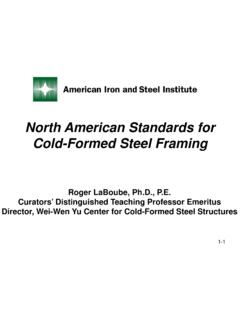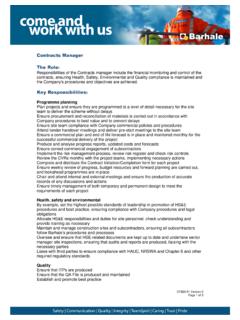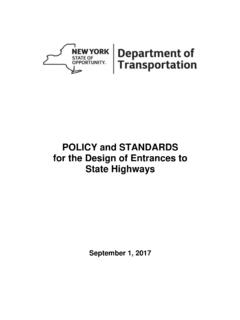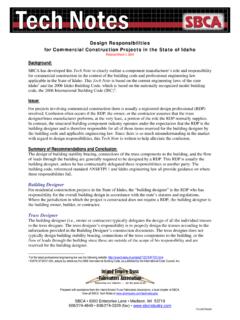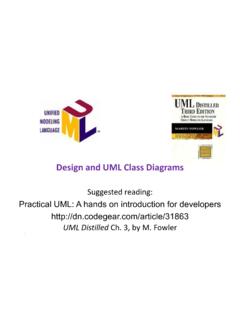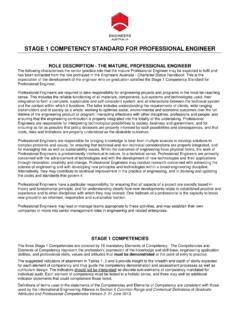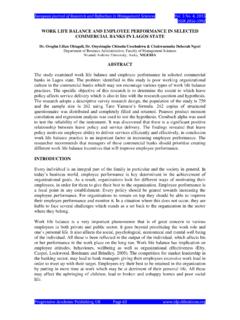Transcription of HVAC DESIGN MANUAL A MECHANICAL ... - Ductwork …
1 HVAC DESIGN MANUAL A MECHANICAL DESIGNER S GUIDE TO SUCCESSFUL DESIGN OF SMALL COMMERCIAL AND INSTITUTIONAL HVAC SYSTEMS BY Fred W. Dougherty, , BAE, MME First Edition March 15, 2009 ii 2009 Fred W. Dougherty i TABLE OF CONTENTS HVAC DESIGN MANUAL Introduction 1 Chapter 1 Procedure Outline 3 Scope Important Terms Tasks of the HVAC DESIGN Chapter 2 Project Information Needed for HVAC DESIGN 7 Documents Data Input Review of Information Codes, Standards, and References Summary Chapter 3 Preliminary DESIGN .
2 Planning 13 Decisions to be Made Outdoor Ambient DESIGN Conditions First Cost and Energy Efficiency Elements of DESIGN Zoning the Project DX Air Source Systems Water Source Systems Split System or Packaged Heating Options Summary Chapter 4 Balancing Outdoor Air and Exhaust Air 19 Scope Basic Rules Ventilation Based on Required Exhaust Commercial Kitchens Ventilation Based on Occupancy and Use Variable Air Volume (VAV) Systems Air Transfer Rules Summary Chapter 5 Heat Loss and Heat Gain 27 Scope Heat Gain and Heat Loss Elements Envelope Elements Walls, Roof, and Floor Envelope Elements Fenestration Internal Loads Unscheduled Outdoor Air Intake Outdoor Ventilation Air Heating and Cooling Load Notes and Tips continued.
3 Ii TABLE OF CONTENTS - continued HVAC DESIGN MANUAL Chapter 6 Cooling and Heating Load Calculations 33 Scope Basic Principles Calculation Procedures The CLTD/CLF Method Radiant Time Series Walls and Roofs Fenestration Internal Loads Summary Chapter 7 Psychrometric Considerations 45 Psychrometric Requirements Psychrometric Chart Process Lines Dew Point Sensible Heat Ratio Load Variations Plotting Points on the Psychrometric Chart High Occupant Density High Percentage of Outdoor Air Heat Pipes Rules Chapter 8 Energy Efficient DESIGN 59 Introduction Equipment Performance Meeting the Minimum Standard Life Cycle Cost Implementing or Exceeding the Standard Minimum Efficiency Air Source vs Water Source Fan Power Limitation System Controls CO2 Control of Outdoor Air Ventilation Economizer Handling Large Latent Loads Consultation with Other Disciplines Chapter 9 Equipment Selection 65 Selection First Steps The Iteration Step 1 Choose a Manufacturer, Model, and Size Step 2 Air Flow Iteration Step 3 Coil Inlet Conditions Step 4 Coil Capacity continued.
4 Iii TABLE OF CONTENTS - continued HVAC DESIGN MANUAL Chapter 9 Equipment Selection - continued Step 5 Psychrometric Analysis Reheat Heat Pipe Heat Pipe Selection Outdoor Air Pre-Treatment Pre-Treatment Outdoor Air DESIGN Condition Enthalpy Wheel Energy Recovery Ventilator DX 100% Outdoor Air Unit Chapter 10 Air Distribution 77 Principles of Air Distribution Air Distribution Example Building Sensible Load Elements Distributing Air Flow to Each Space Caveats Implementing the Desired Air Flows Chapter 11 HVAC Controls and Indoor Air Quality 87 Basics of Indoor Air Quality Control The Basic HVAC Control Automatic Time of Day Control Humidity Control Reheat Dedicated DX Outdoor Air Unit Chapter 12 DESIGN Drawings, Specifications, Notes, and Schedules 95 Document Plan Objective Medium Base Sheet Elements of the Final Documents Creating the Documents Base Sheet Equipment Schedules Equipment Layout Diffusers and Grilles Ductwork Layout and Sizing Exhaust and Outdoor Air Intake Elevations and Details Quality Control and Operational Notes Chapter 13 Checking Your Work 109 The Designer s Dilemma Common Pitfalls Symbols 113 continued.
5 Iv TABLE OF CONTENTS - continued HVAC DESIGN MANUAL References 115 Appendix A Economizer DESIGN and Control A-1 1 INTRODUCTION This book is the distillation of 30 year s experience with HVAC DESIGN and construction, as a designer, as a supervisor, as an agency planner and reviewer, and finally, again, as a free lance HVAC designer of small commercial and institutional projects. My HVAC experience followed twenty years in the aerospace industry developing and testing military gas turbines and rocket engines. The procedures and principles described here will be of value to technicians and graduate engineers with a firm background in thermodynamics and fluid flow the bedrock fundamentals of HVAC processes.
6 It is for engineers and technicians who are just entering the HVAC DESIGN field as members of a consulting engineering firm, or who wish to work independently for local architects and owners designing HVAC systems for small offices, mercantile establishments, churches, and restaurants. The principles and procedures outlined apply to any size job, but specific how to instructions are for small projects of limited scope. In most jurisdictions, a licensed professional engineer must sign and seal plans for submittal to a local building plans reviewer. However, in many engineering firms, much of the actual DESIGN work is performed by talented technicians or intern engineers under the supervision of a professional engineer.
7 This book will also be of interest to licensed HVAC contractors who specialize in small commercial and institutional buildings, and who wish to understand the principles of the designs they contract to implement. In some jurisdictions, such as the State of Florida, licensed MECHANICAL contractors are permitted to perform the DESIGN of HVAC systems that fall below specific thresholds of building occupancy and system size and cost. This book will be of use to contractors who wish to take advantage of that provision. Applying the principles and methods outlined will help the designer avoid the problems that plague many projects with small budgets and unsophisticated owners.
8 The most common of these are moisture and mildew problems exacerbated by code requirements or high density occupancy. On the other hand, these principles will also help control the costs both of DESIGN and construction, by guiding the designer to the most cost effective solution commensurate with local codes, indoor air quality, and reasonable energy efficiency. END 2 3 Chapter 1 Procedure Outline Scope This book is not intended to teach engineering fundamentals, but to help trained MECHANICAL engineers and technicians understand and undertake the HVAC DESIGN of small commercial and institutional buildings. This chapter will outline the tasks that must be executed to arrive at a successful and cost-effective DESIGN .
9 Cost-effective from the standpoint of the project cost, but also from the standpoint of the DESIGN effort. Clients for small building DESIGN , generally owners, architects, or contractors, have legitimate cost constraints, and designers who cannot work within those constraints will soon find themselves out of work. Important Terms The following terms will be used throughout this book. They have specific meanings in connection with HVAC systems, ventilation, and indoor air quality. A building is a roofed and walled structure with controlled environment, built for human occupation and use. The thermal envelope of a building is the primary insulation layer of the building where resistance to heat transfer is the greatest.
10 The pressure envelope is the primary air barrier of the building, which is sealed to provide the greatest resistance to air leakage. A zone is a group of spaces within the thermal and pressure envelopes which are served by a single air handling system. A sub-zone is a group of spaces within a zone that may be served by a single terminal component such as a variable air volume unit. A space is a single room, with or without a ceiling plenum. A room is the part of a space bounded by walls and a ceiling that is usually routinely occupied and served by grilles and registers to supply and recirculate or exhaust conditioned air. A ceiling plenum is a cavity within the pressure envelope that is above a room and that is formed by a dropped lay-in ceiling and floor or roof structure above.
